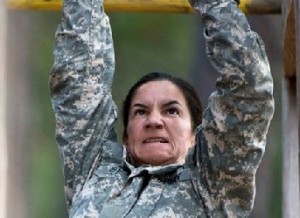WWII Women Veterans
WWII Women Veterans: A Historical Highlight
by Liz Zaczek
March is dedicated to women’s history so it seems like the perfect time to discuss the role of women in the military during World War II. Reluctant to enter the war when it began in 1939, the United States quickly committed itself to total war after the Japanese attack on Pearl Harbor. That commitment included utilizing all of America’s assets—women included. Approximately 350,000 women served in our nation’s military during World War II. These female veterans, during their time in active service, drove trucks, performed maintenance and repaired airplanes and other military vehicles, while others served in clerical roles throughout the branches of our country’s armed services. Playing an important role in the war effort, WAACS, WAVES, WASPS, SPARS and others performed important duties both stateside and overseas freeing up their male counterparts to join the front lines on the battlefields. While most American History textbooks contain passages dedicated to WAACS and WAVES very little information is presented about several of the lesser known, yet just as important, female military forces and the important role these brave women played in our Navy’s, Coast Guard’s, Air Force’s and Army’s war efforts.
After the bombing of Pearl Harbor on December 7, 1941, the United States officially entered World War II. A year later, President Franklin Roosevelt signed a law creating the Women’s Reserve branch of the Coast Guard and the service began recruiting women for this new force. Initially it was assumed that the women volunteering to serve in the forces would have few useful skills other than typical “women’s skills” like clerical work and telephone switchboard operation. However,several newly enlisted women surprised their male superiors demonstrating their value and worth to the war efforts. A former police officer proved she could shoot as well as a man and a former professional photographer demonstrated her abilities and became a photographer’s assistant documenting the war…just to name a few.
The SPARS took their name, an acronym, from the US Coast Guard motto, “Semper Paratus” and its English translation, “Always Ready”. Captain Dorothy S. Stratton, head of the SPAR forces, is credited with creating its moniker and carving its place in American history. Captain Stratton, on leave from her position as Dean of Women at Perdue University served as a Lieutenant in the Navy Women’s Reserve (WAVES) before accepting her post with the US Coast Guard. After estimating that it would need 8,000 enlisted women and 400 female officers, at its peak there were 12,000 female members of the SPARS distributed across the United States, including Alaska and Hawaii.Members took over many duties on the homefront including rigging parachutes, serving as radio operators, lab techs, nurses and cooks. Many of these female military members rose through the ranks faster than their male counterparts and often hid their rank insignia from them so as to not cause strife.Among the most unique duties and assignments for these patriotic young women was the operation of the LORAN (Long Range Aid to Navigation) system. This leading edge system tracked and calculated the precise location of ships at sea. Notable among the SPARS operating stations across the United States was the station located in Chatham, Massachusetts staffed by an all female crew, the first of its kind.
During their time in active duty, these women rose the ranks and held 43 different ratings from Boatswain mate to Yeoman. Originally signing on for “duration plus six” (months),within a year of the Allied victory the SPAR reserve forces were deactivated.
Prior to World War II, the U.S. military showed little interest in using aircraft and flight nurses to evacuate wounded soldiers from the front lines. The global war, however, forced the U.S. Army and Air Forces to revolutionize military medical care through the development of air evacuation (later known as aeromedical evacuation) and flight nurses.Over 1,000 women trained at the Bowman Field in Louisville, Kentucky as Flight Nurses through the United States Air Force and Army. From these newly trained specialized soldiers 18 medical air evacuation squadrons were formed. The first class of flight nurses formally graduated from the Bowman Field facility on February 13, 1943 however several squadrons of the newly formed unit were deployed to front overseas before the graduation, and in some cases, their training was complete. 2nd Lt. Geraldine Dishroon, the honor graduate, received the first wings presented to a flight nurse. In 1944, Dishroon served on the first air evacuation team to land on Omaha Beach after the D-Day invasion.
These squadrons evacuated over 1.5 MILLION sick and wounded soldiers, sailors and Marines from battlefields across the warfront saving countless lives. Pioneers of in-flight intensive care, the flight nurses tended to soldiers mid air as they flew across Europe, the Pacific and Asia transporting them safely from battle aid stations to inter-theater and intercontinental stations and home to the USA. The planes, predominantly C-46’s, C-4’s and C-54’s, became airborne hospitals with the all female squadrons providing care from take off to landing.
As part of their training the flight nurses’ training consisted of aero-medical physiology, field survival, map reading, crash procedures, and physical conditioning.. Nurses needed to be and stay in top physical condition to best care for their patients during these rigorous flights. Since these planes were also used to transport military supplies and thus were not painted with a red cross to indicate their non-combat status, these evacuation flights were vulnerable to enemy attacks. For this reason, flight nurses and medical technicians were considered volunteers.
Flight nurses were truly unique for their time. Not only did they operate under their own authority, they also outranked the male surgical technician that accompanied them.In the 1940s, only trained physicians could start IV’s and oxygen on a patient. The flight nurses were the first not only to do these tasks but did them flying over hostile and dangerous environments. They also had to deal with extreme medical emergencies, including shock, hemorrhage, and sedation.
As with any military profession at the time, flight nursing did not come without its risks and dangers. Those brave women had to keep the fighting men alive while combating the dangers in the air over the European and Pacific theaters. Many women were taken as POWs after crash landing behind enemy lines. In all, sixteen flight nurses were killed during the war.
Eventually, about 500 flight nurses served as members of 31 medical air evacuation transport squadrons operating worldwide. It is a tribute to their skill that of the 1,176,048 patients air evacuated throughout the war, only 46 died en route. Seventeen flight nurses lost their lives during the war.
The United States Army Nurse Corps tended to the wounded and ill soldiers on land and in the air in cooperation with the Air Force’s Flying Nurses. By 1945, more than 57,000, the largest number of nurses on active duty in the history of the organization, Army nurses were assigned to hospital ships and trains; flying ambulances; and field, evacuation, station, and general hospitals at home and overseas.
Serving as part of the Army Nurse Corps did not come without the dangers their male counterparts faced on the front lines. In May 1942, with the fall of Corregidor in the Philippines, 67 Army nurses became Japanese prisoners of war. During their thirty-seven months in captivity, these women endured primitive conditions and starvation rations, yet they continued to care for the ill and injured in the internment camp hospital. In Anzio in January 1944 ,army nurses dug foxholes outside their tents and cared for patients under German shellfire. Their bravery and perseverance bolstered the spirits of the soldiers who shared the same tough experience. Two evacuation hospitals, with their complement of nurses, landed in Normandy in June 1944, four days after the invasion.
After the war, a wide range of public health missions required that Army nurses supervise communicable disease measures as former enemy countries were reorganized. In Hiroshima, these female officers cared for victims of the atomic bombs. In Munich, they prevented a mass epidemic among displaced persons camps. In Hamburg, the healthcare professionals established prenatal and well baby clinics. In Heidelberg, they helped people recover from the psychological impact of the devastating effects of the war.
The Corps’ military status continued to evolve in the time after the war. In one year, the branch’s active duty membership dropped from 57,000 to 8,500 nurses. On April 16, 1947, the government combined the Army Nurse Corps into the medical department of the United States Army and authorized a minimum number of no less than 2,558 nurses. It also provided permanent commissioned officer status for members of the Corps with the ranks of Second Lieutenant through Lieutenant Colonel. Specialized requirements in military nursing became the focus of the postwar era. Recruits completed courses in anesthesia, psychiatric treatment, operating room and community health nursing and hospital administration.
The war ended with the armistice on August 14, 1945. As life began to return to normal across the country and the world, these courageous female veterans suddenly found themselves being encouraged to return to their civilian lives and roles. While many did, others, with new found post-war experience confidence, used the skills they learned in the military to redefine the roles of women in the workforce. In the decades that followed, while progress was slow, serving their country in those important roles empowered the women to fight for the right to work in non-traditional jobs for equal pay and equal rights in the workplace and beyond.




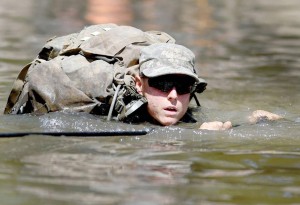
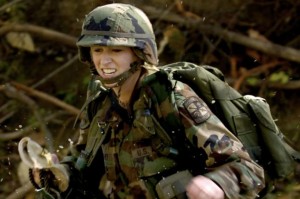

 By
By 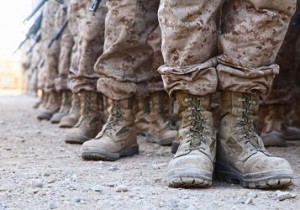
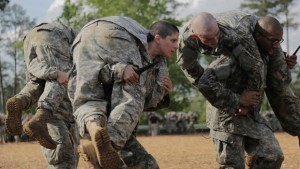 By
By 
